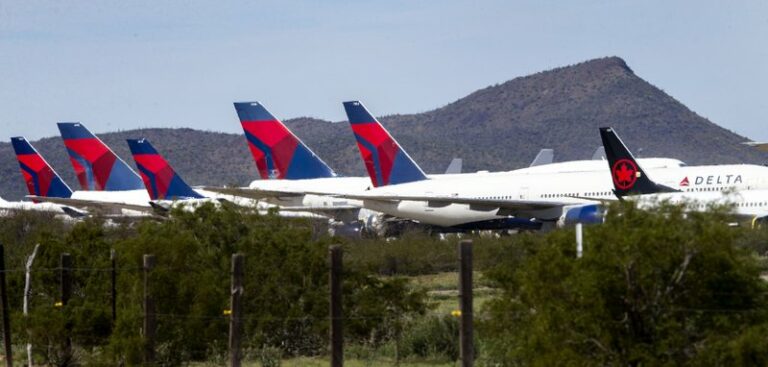Delta Air Lines, the biggest and most profitable U.S. airline, lost $534 million in the first quarter, a setback that will appear trivial when the full force of the pandemic is revealed in the current quarter.
Delta warned Wednesday that revenue during the April-through-June quarter, typically a period of harried travel, will plummet by 90% compared with last year, when there were no government travel restrictions and flights were full.
“These are truly unprecedented times for all of us,” CEO Ed Bastian said.
Delta is the first U.S. carrier to detail the damage that began to emerge in at the tail end of the first quarter, although United Airlines said Monday that it would record a pretax loss of $2.1 billion, confirming what most had suspected.
It was Delta’s first quarterly loss in more than five years, and the airline is likely to post its first full-year loss since 2009.
The focus now at Delta and other airlines is to hunker down, cut costs, and borrow billions of dollars needed to ride out the pandemic. Bastian said Delta’s focus will be saving cash at least for the rest of 2020.
That will be the mantra for all airlines this year.
Just weeks ago, industry leaders talked of a slump that would be followed by a sharp rebound once the public felt that the outbreak was under control. Those hopes are gone.
“We have to be prepared for this to take several years to recover,” Bastian said. “Whether it’s three years or two years or four years is anyone’s guess. None of us have ever seen anything like this before.”
In the past week, flights within the United States have averaged about 12 passengers each, according to trade group Airlines for America.
And there are already 75% fewer flights than is typical.
Delta is now paying out more in refunds for cancelled flights than it receives from new bookings. At the end of March, it was burning through $100 million a day, though it hopes to cut that rate in half before July.
With passenger traffic roughly 5% of year-ago levels, Delta is taking an ax to its schedule, cutting passenger-carrying capacity in the second quarter by 85%, with the deepest cuts on international routes. Delta has parked more than 650 planes, closed airport lounges and offered unpaid leave of up to a year — 37,000 employees, more than one-third of Delta’s work force, have accepted.
Delta will get $5.4 billion in grants and loans from the federal government to cover payroll costs through September. What happens to employees after the federal money runs out isn’t clear, but Bastian told employees in a memo that “Delta will be a smaller airline for some time.”
The airline plans to apply for $4.6 billion more in federal loans, although executives said they don’t plan to draw the funds immediately and believe they can tap private credit sources instead. Delta has already raised $5.4 billion from bank loans, aircraft sale-leasebacks and other measures and drawn down $3 billion from earlier credit lines.
For the first quarter, the Atlanta carrier’s pretax loss, not counting adjustments to investments, was 51 cents per share, matching Wall Street expectations, according to a survey by FactSet.
Revenue dropped by $1.9 billion, or 18%, to $8.59 billion, well below industry analysts projections of $9.18 billion, and Delta’s weakest since early 2013. The decline was in every part of the plane — revenue fell in both premium seating like business class and in the main cabin.
The average flight was 73.1% full, down nearly 10 percentage points from a year earlier. But that’s for the entire quarter and it fails to capture the virtually empty aircraft that began arriving at airport gates in March.
About the only bright spot for Delta was the fuel bill, which fell 19%, a savings of $383 million. But like people who are stuck in their homes during the pandemic, Delta isn’t taking full advantage of plunging energy prices because flights are so sparse.
Shares of Delta Air Lines Inc., down 60% this year, slid 4% Wednesday.
(AP)










